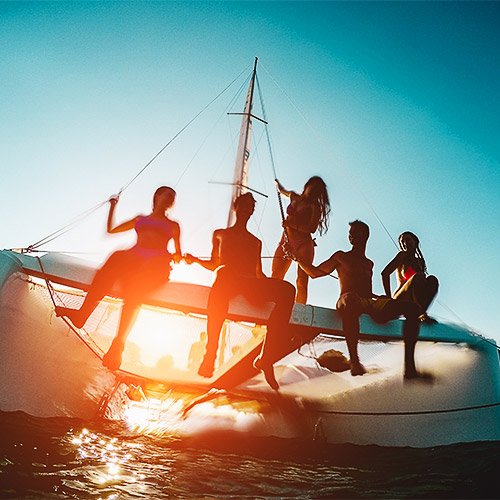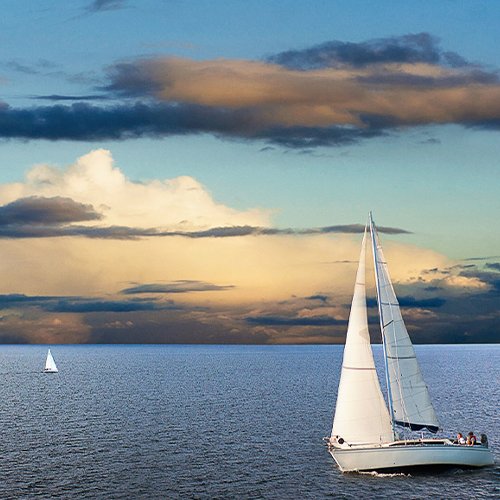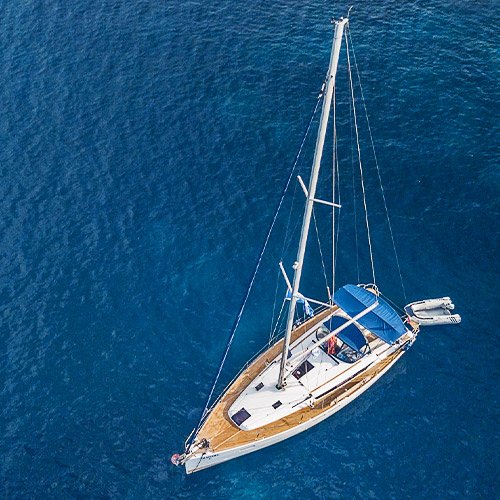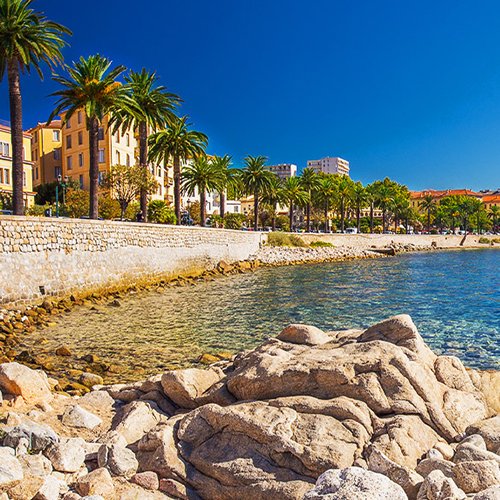The terrain of Corsica is mostly mountainous, consisting of an ancient massif that divides the island on a north- west to south-east axis. The island has more than 20 peaks exceeding 2000 meters, with Mount Cinto reaching an elevation of 2710 metres. The landscape is very dramatic, due to the granite rocks displaying vivid colours. The mountains descend steeply in parallel ranges to the west, where the coast is cut into steep gulfs and marked by high cliffs and headlands. To the east the mountain is falling in broken escarpments to extensive alluvial plains bordering a lagoon-indented coast, with many coves to shelter your boat when you sail around Corsica.
Corsica is also known for its luxuriant vegetation, large part of the island being covered with a scrubby underbrush (maquis). The flowers of the maquis produce a fragrance that carries far out to the sea, and can be noticed also when you anchor in one of Corsica’s many bays and coves, and that’s why Corsica has earned the name “Scented Isle.”
Arriving in Corsica
If you plan to arrive by plane, there are several available options on the island:
Other options would be to fly to the mainland on:
From these airports you can easily find transfer to Corsica Island by ferry, and a good tip would be to book in advance the tickets. For example, 1 Adult Ticket both ways from Nice to Bastia is 175 EURO and the transfer takes around 6 hours.
On the other hand, if you plan to sail to Corsica, we recommend arriving in Port de Plaisance de Calvi, a good, sheltered harbour located on the western side of the island, offering also many options to rent a boat in Corsica, with or without a skipper.
Weather in Corsica
Corsica is characterized by a hot-summer Mediterranean climate along the coast and a warm-summer climate further inland. Best time for sailing is between May and October, with an average of 26 °C. The hottest month is August with an average of 29.7 °C and the coldest month is January with an average of 13.6 °C.
In Corsica the tides have a small range of 10 to 30 cm, so they will not create major difficulties to skippers when anchoring. However, the winds depending on the direction can change water levels considerably and also sailing conditions, so keep an eye on the wind and reef the sails if necessary. In the summer months there are several winds that occur: Tramontana, Mistral, Levant, Scirocco, Libeccio and Ponente.
Challenging winds are the Mistral, which blows from the North-West, and the Libeccio from the South-West. For each sailing trip you should consider checking the weather forecast every time you leave the harbour or anchorage, because the wind may vary in directions and strengths, and weather can rapidly change its mood.
Corsica is a beautiful sailing location and is suitable for both beginners and experienced skippers. As the sailing conditions are quite demanding on the west coast and in the Strait of Bonifacio, it is though recommended that less experienced skippers sail in the South-Eastern part of the island.
Explore Corsica Island
Find out below the top 10 places to visit while sailing in Corsica, to fill your holiday by exploring top destinations, admiring astonishing landscapes and relax in the most astonishing bays, coves and beaches.
- Calvi City
- Ajaccio City
- Bastia City
- Cap Corse
- Saint Florent
- The Revellata peninsula
- Scandola Nature Reserve and Girolata – Porto
- Corsica’s best beaches
- Propriano City
- Bonifacio City
1. Calvi City
This beautiful sea-side city surrounded by mountains it is sure one of the best places to visit while sailing in Corsica. The most visited place in Calvi is the citadel, which will amaze you with its two towers and 5 bastions. The stronghold was built between 13th and the 16th centuries and resisted many times to the French attacks, until at the end of the 18th century. Inside the citadel you can also find The Church of Saint Jean Baptiste, the former palace of the Genoese governors and Saint Anthony’s Oratory.
If you love hiking, you should go to the forest of Bonifatu, located at 30 minutes drive from Calvi, this forest will impress you with its walking trails and natural pools to swim in the river.
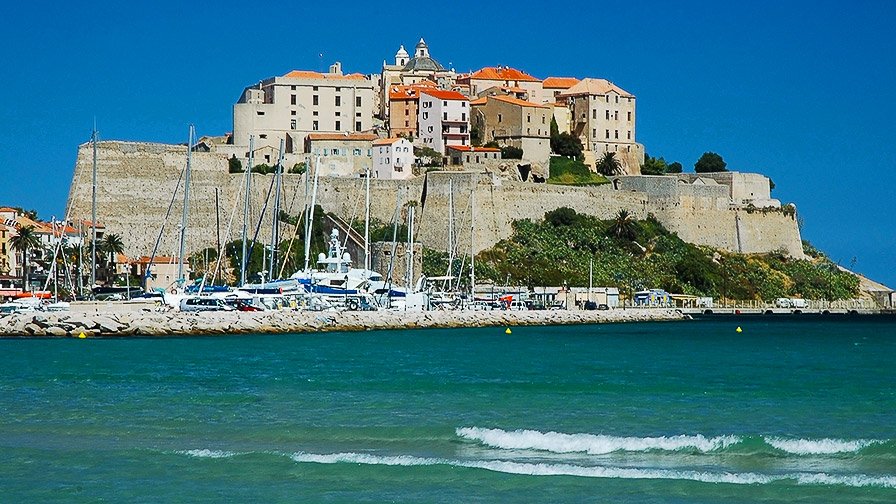
The citadel of Calvi, Corsica
capetanos.com2. Ajaccio City
Napoleon Bonaparte was born on August 15, 1769, in Ajaccio and spent his childhood here. While visiting the city you will notice that many places are named after Bonaparte. The house Bonaparte lived in is now a museum which preserves some of the original furniture and also the Bonaparte’s family history tree.
- Address: Rue Saint-Charles, 20000 Ajaccio
- Visiting schedule:
October - March: 10:30 to 12:30 and 13:15 to 16:30pm
April - September: 10:00 to 12:30 and 13:15 – 17:00 - Ticket price: 7 EUR
If you are visiting Ajaccio in August, make sure you don’t miss the Napoleonic Days, a three days festival organized as a tribute to the emperor with costumed military parades, historical re-enactment, exhibitions and concerts.
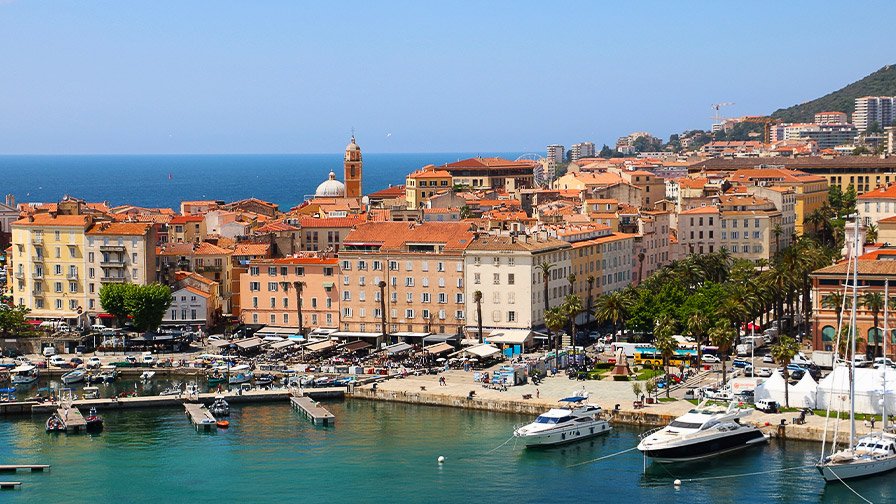
Ajaccio, Corsica
capetanos.com3. Bastia City
The most emblematic location in Bastia is Saint-Nicolas Square, one of France’s vastest esplanade just in front of the port, welcoming sailors from all over Europe. The plaza hosts lots of events all over the year, like concerts in summer, an ice rink during the Christmas period and the Salon du Chocolat, for everybody with a sweet tooth.
Surrounded by large, exotic trees and by bars and restaurants, Saint-Nicolas Square is the perfect place to enjoy a drink on a terrace. We strongly recommend you to try out some of the sweets from the Chocolate store Grimaldi.
Another important place to visit is the Citadel of Bastia, built on a natural promontory in 1380 by a Genoese Governor.
The top places to visit in Bastia’s citadel are:
- Notre-Dame street, the main street
- The Sainte-Marie Cathedral, showing a beautiful baroque interior and decorated with many Italian paintings
- The Holy-Cross Brotherhood Oratory, a pure rococo-style church with a black Christ found in the sea by fishermen in 1428
- The Dungeon Square: there, the shopkeepers who had cheated their customers were tied up for a whole day. At the end of the day, their counter was broken, to make clear that they were not allowed to trade anymore
- The Governors’ Palace housing the Bastia History Museum
- The Louis XVI gate: it was once the only way to get in the citadel. The citadel’s gate and walls are classified as a historical monument
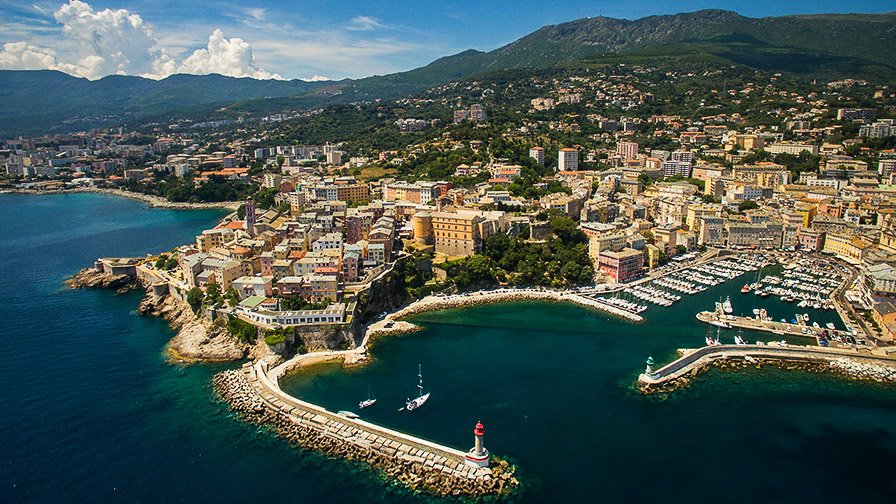
Bastia view over the city, Corsica
capetanos.com4. Cap Corse
If you enjoy hiking, then this could be one of the best trails you ever walked on, Cap Corse being among the best places to see in Corsica. The trail starts at “Chemin des douaniers” and has 19 kilometres of picturesque landscapes that will simply amaze you.
If you prefer to chill, but still admire the amazing coast, you can sail away from Macinaggio. Along the coast you will discover The Cap Corse and its Genoese towers, the Finocchiarola archipelago and Barcaggio. With lots of coves, bays and beaches on your port side, it’s the best occasion to visit them and enjoy pure natural landscapes.
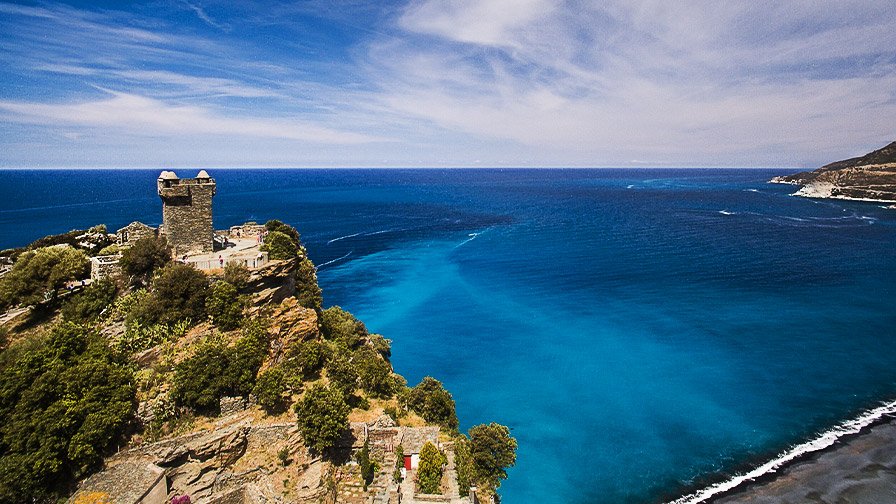
Village of Nonza in Cap Corse, Corsica
capetanos.com5. Saint Florent
The city has the second biggest marina in Corsica, Port Saint Florent, welcoming many sailors every summer, with reasonable prices and good amenities and services. The marina and the city are also compared to Saint Tropez.
Taking a walk to the citadel through the village’s beautiful small streets will take you to the top from where you can enjoy spectacular panoramas, overlooking the gulf of Saint Florent.
Another point of interest is Santa Maria Assunta cathedral, also known as Cathedral of Nebbio. The 12th century, roman church is dedicated to the Assumption of Mary. Inside you can find the fresco of the 12 apostles and the remains of Saint Florent, the village’s patron saint.
- Address: 6 Piani, 20217 Saint-Florent
- Schedule: Every day from June to October
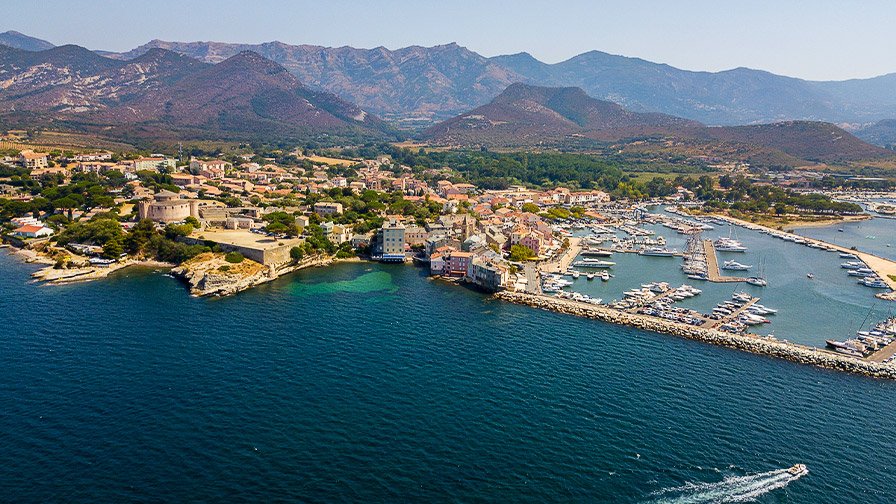
Aerial view of Saint Florent City and marina, Corsica
capetanos.com6. The Revellata peninsula
The Revellata peninsula is considered rather a wild area. Sailing to this location will give you lots of options to drop the anchor in one of the numerous coves or bays with sandy beaches. Going onshore will give you access to numerous walking trails, sunbathing and snorkelling.
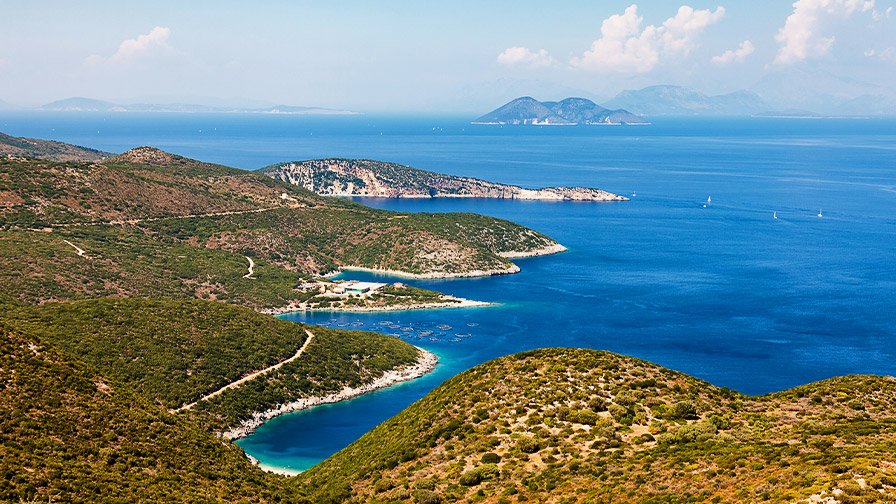
Revellata Peninsula, Corsica
capetanos.com7. Scandola Nature Reserve and Girolata – Porto
The nature reserve of Scandola is one of Corsica’s must-see attractions, and can be best visited from the sea to admire its unique scenery.
Scandola reserve is listed as a UNESCO World Heritage Site and hosts an exceptional and well-protected marine and terrestrial wildlife, so do your best to respect mother nature and keep at minimum the impact on this amazing area because it’s strictly forbidden to walk, hunt, fish or dive there.
If you wish to visit the reserve, you will need to go to the small port of Porto and from here, you can choose between many different boat excursions, in case you are renting a boat in Corsica. All tours include a stop in Girolata, a former fishing village only accessible by boat or a hiking trail.
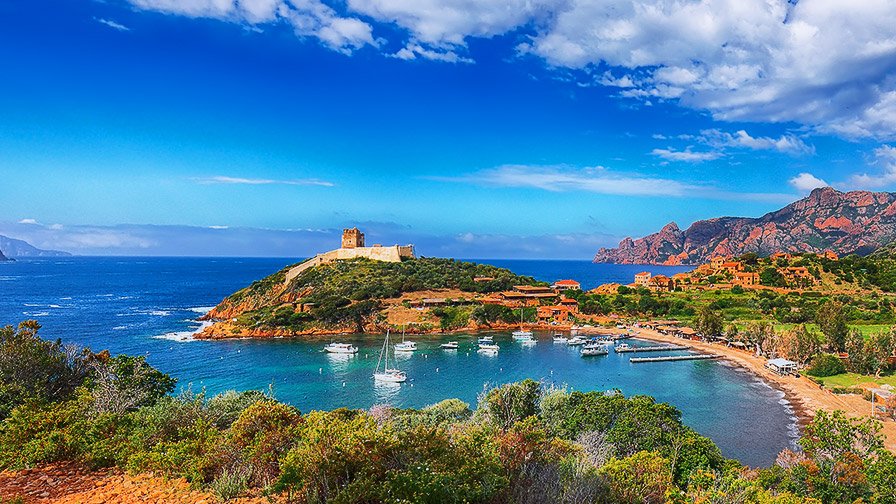
Girolata bay in natural reserve of Scandola, Corsica
capetanos.com8. Corsica’s best beaches
Corsica is the right place if you enjoy sunbathing or swimming, as you will find magnificent sandy beaches and coves all around the island, so each stop while sailing will grant you amazing memories, even in the mountains because there are many rivers featuring natural swimming pools to take a dip.
The most famous beaches in Corsica are:
- Palombaggia, close to Porto-Vecchio, is ranked among the most beautiful beaches in the world
- The Lavezzi beaches, accessible only by boat
- Paraguan Beach, also located near Bonifacio
- Little Sperone Beach, close to Bonifacio
- Rondinara, 20 km away from Porto-Vecchio
- The beaches of Saleccia in the Agriates Desert
- Ostriconi Beach, located between Saint-Florent and Calvi
- Roccapina Beach in Sartene
- Arone Beach, located close to the Calanques of Piana
- Mare e Sole, close to Ajaccio
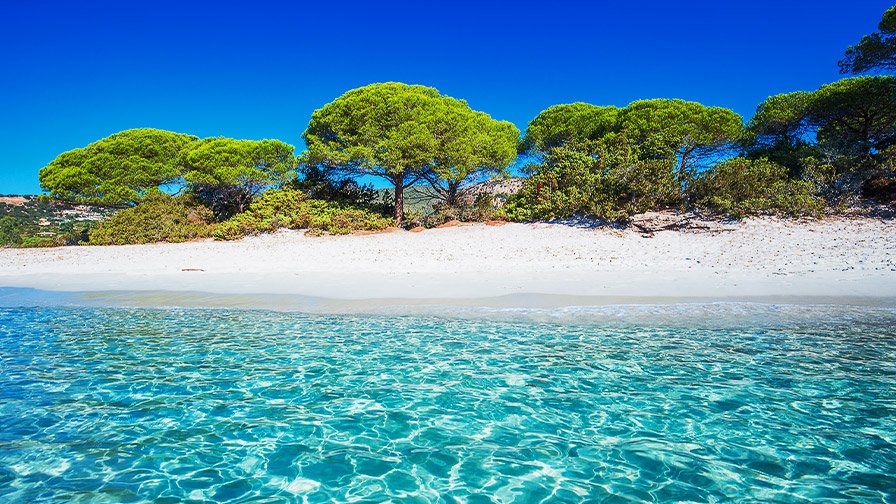
Palombaggia beach, Corsica
capetanos.com9. Propriano City
Propriano is a famous seaside resort, where you can discover the Corsican culture and try some local cuisine in numerous restaurants. Corsicans love soups and stews and depending on the time of the year, menus will include zuppa corsa, a vegetable soup in a ham-bone stock and “civet de sanglier”, a thick stew of wild boar, chestnuts, vegetables, red wine and fennel. Among the best restaurant to try the local dishes we recommend A Casa di l’Orsu.
You can drop the anchor in one of the small coves close to Campomoro, where you can find good shelter, relax and take a swim after a long day of explorations.
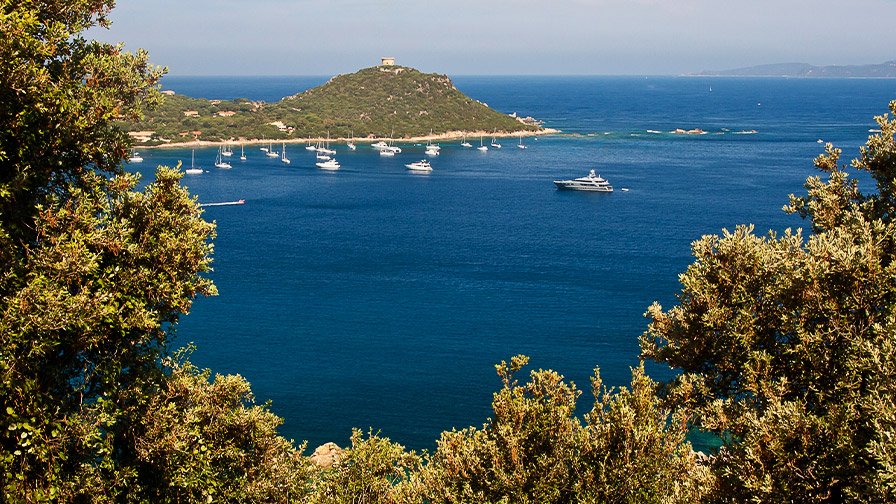
Anchorage near Campomoro, Corsica
capetanos.com10. Bonifacio City
Bonifacio is clearly a must stop and see cities in Southern Corsica, where you can also find shelter in Port de Bonifacio. As the sailing conditions are quite demanding in the Strait of Bonifacio, it is though recommended for more experienced skippers.
Located in the extreme south of Corsica, Bonifacio and its surroundings offers unique panoramas and beaches ranked among Corsica’s most beautiful, and these should be definitely enough reasons to spend some days in this amazing location.
One of the first thing that will just amaze you sailing to Bonifacio are the houses, perched on top of the white cliffs, overlooking the sea.
Best things to do in Bonifacio:
- Take a walk in the Citadel
- Go down King of Aragon’s staircase
- Visit the Bastion of Etendard
- Discover by boat the nearby marine caves
- Enjoy a drink on the terrace of a restaurant in the port, like Les Quatre Vents
- Admire from the sea the Pertusato lighthouse
- Sail to Lavezzi Islands
- Enjoy the magnificent beaches of Petit and Grand Sperone, ranked among the island’s most beautiful. Located in the extreme south of Corsica, Bonifacio and its surroundings offers unique panoramas and beaches ranked among Corsica’s most beautiful, and these should be definitely enough reasons to spend some days in this amazing location
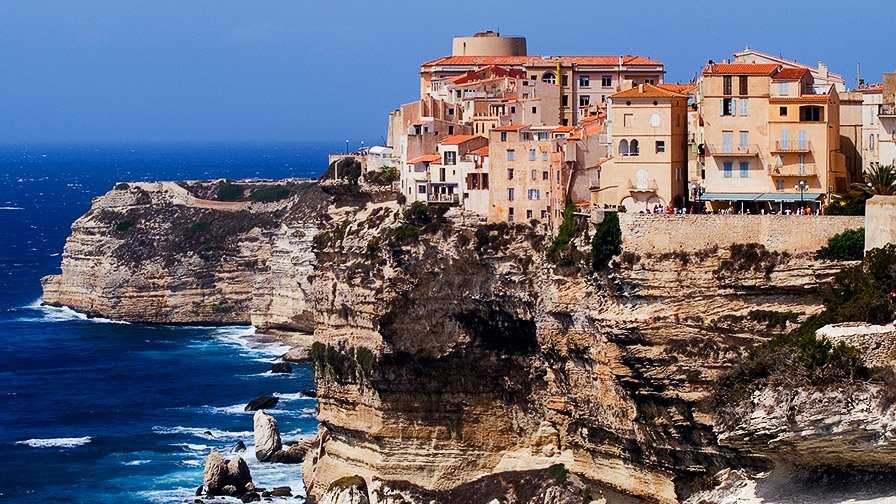
Bonifacio City, Corsica
capetanos.comCorsica is a popular holiday destination for sailor across the world, best known for its warm climate, dramatic mountain peaks and stunning coastlines. Situated southeast of France’s Mediterranean coast, the island attracts a steady stream of sailors each year.
Besides being every beach-lovers dream, Corsica is surrounded by rich history that spans centuries of traditions, with ancient buildings on every corner, winding cobbled streets, amazing cuisine and a thriving art and music scene. Whether you’re looking for a week spent on sandy beaches, or rent a boat and sail for a week around Corsica, a tour around France’s most fascinating museum or a scenic village ramble on horseback, Corsica holidays are the perfect choice for sailing in summer time.

